Palestrina Stitch
part of the Palestrina Stitch Family
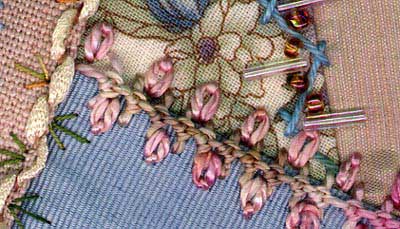
![]()
![]()
Palestrina Stitch is also known as Double knot stitch, Tied coral stitch, Old English knot stitch, Smyrna stitch and Twilling Stitch. It is a stitch found often on Italian embroidery - hence the name.
With this stitch you are not restricted to even-weave fabrics as it is easily worked on many types of fabric forming a characteristic attractive knotted line. It can be used for outlines and linear elements or you can work it row upon row solidly, to form a textured filling. It can also be worked as an isolated stitch. A firm twisted thread, such as pearl cotton, show the knots to their best advantage.
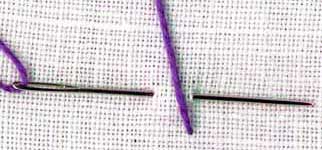
Work the stitch from left to right, along a line. Bring the needle up through the fabric and make a small stitch by moving across in a slanting diagonal manner and take the needle down through the fabric. This forms the first bar on to which the stitch is made.
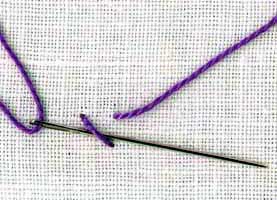
Moving down vertically behind the fabric bring your needle up again at the base of this diagonal stitch (see the illustration). Slide the needle under the diagonal stitch moving from the top down. This action takes the thread over the top of the bar.

Once again pass the needle under the bar. With the needle still under the bar but not through the fabric loop the thread around the needle and then pull the needle under the bar. This is actually a buttonhole stitch. Pull the thread to form a knot.
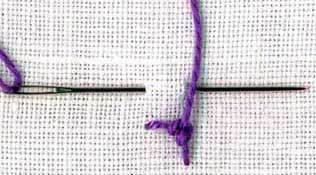
To move on to the next stitch, move along the line and take the needle down through the fabric this section of thread forms the second bar on to which you work your knot. Space the knots evenly and close together to produce a textured line which follows a curve.
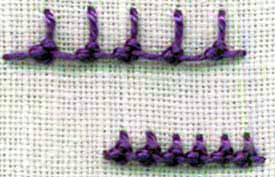
The knots can be worked closely together to produce a heavy line or spaced quite far apart. In the illustrations I have used quite large foundation stitches so that people can see how the stitch is made.
Normally and traditionally you would make these stitches smaller and a similar scale to the knots. This spacing will change depending on the thickness of your thread. This spacing and scale can also be used to create different effects.
If the bars are extended and above the knot (as they are in the illustrations) this stitch becomes Long Armed Palestrina stitch and if the bars are long and below the knot it becomes Long Legged Palestrina stitch.
You can have a lot of fun waving these arms and legs around moving the extended bars up and down in the process changing the line and shape. Different effects can be created by using different weights of thread. It is a very versatile stitch. The knots can also be work individually and scattered across an area.
Palestrina Stitch Family
There are a number of variations in this versatile stitch such as Triple Palestrina, and Pearl stitch which is reversed Palestrina, Basque knot is also a variety of Palestrina. Sorbello Stitch is also an interesting variation of this stitch.
